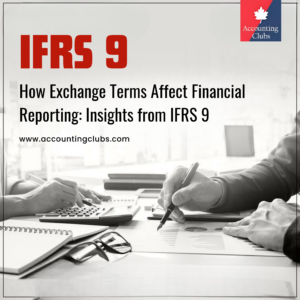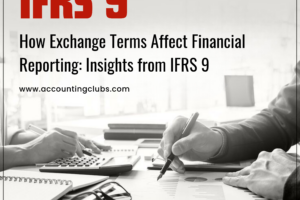Demystifying ESG Disclosure:A Critical Lens for Evaluating Companies

Environmental, social, and governance (ESG) issues are no longer fringe concerns. They are central to a company’s long-term viability and a critical lens through which stakeholders assess corporate performance. To address this growing need for transparency, companies are increasingly adopting ESG disclosure, a practice of publicly reporting on their impact across these three key areas.

Imagine ESG disclosure as a window into a company’s soul. It sheds light on how the company interacts with the environment, its commitment to social responsibility, and the ethical principles guiding its operations. This transparency empowers various stakeholders, including investors, regulators, and consumers, to make informed decisions.
Why is ESG Disclosure Crucial?
The importance of ESG disclosure is multifaceted. Here’s a breakdown of its key benefits:
- Enhanced Transparency and Accountability:
ESG disclosure dismantles information asymmetry. Previously undisclosed risks, such as pollution from a manufacturing plant or labor rights violations in the supply chain, become visible. This empowers stakeholders to hold companies accountable for their actions and fosters trust through open communication. - Driving Progress Towards Sustainability: By disclosing ESG performance, companies are implicitly acknowledging the importance of these issues. This disclosure acts as a catalyst for change, pushing them to implement strategies that minimize environmental impact, promote social well-being, and implement ethical governance practices.
- Building Brand Reputation and Trust: Consumers today are increasingly conscious of a company’s social and environmental footprint. Strong ESG practices demonstrably through disclosure can significantly enhance brand reputation and loyalty. This attracts environmentally and socially conscious customers, employees, and partners, creating a win-win situation.
Lifting the Hood: How Does ESG Disclosure Work?
Companies have a buffet of reporting frameworks to choose from, such as the Global Reporting Initiative (GRI) or the Sustainability Accounting Standards Board (SASB). These frameworks provide a standardized structure for reporting, ensuring consistency and allowing for meaningful comparisons across industries.

For instance, a tech company might disclose its total energy consumption. However, this wouldn’t tell the whole story. Frameworks encourage companies to present data in relative terms, such as energy consumption per unit of product produced. This allows investors to compare a tech company’s energy efficiency with that of a manufacturing giant.
Who are the Key Players in ESG Disclosure?
Currently, the primary consumers of ESG disclosure data are financial institutions and rating agencies. They analyze this data to generate ESG scores, which serve as a benchmark for investors to compare the sustainability performance of different companies.
However, the audience for ESG disclosure is expanding. A growing number of environmentally and socially conscious consumers, employees, and supply chain partners are incorporating ESG data into their decision-making processes. Additionally, regulators are increasingly using ESG disclosures to determine eligibility for incentives or penalties.
What Makes High-Quality ESG Disclosure?
Effective ESG disclosure goes beyond mere data points. Here are some key characteristics:
- Comprehensive Risk and Opportunity Assessment: A robust disclosure identifies and analyzes potential threats and opportunities related to environmental, social, and governance issues. This allows stakeholders to understand the company’s risk profile and its potential for sustainable growth.
- Actionable Strategies and Implementation Plans:
Simply listing initiatives isn’t enough. High-quality disclosure outlines clear strategies for mitigating risks and seizing opportunities. This includes details on budgets, timelines, expected outcomes, and dedicated teams responsible for implementation. - Data-Driven Performance Measurement: Credible disclosure showcases concrete efforts and progress towards sustainability goals. This requires quantifiable metrics that demonstrate improvement over time, both internally and compared to industry peers.
- Standardization and Accuracy: Following established reporting frameworks and ensuring data accuracy are essential for transparency. This allows for clear comparisons and facilitates informed decision-making by stakeholders.
The Road Ahead: The Evolving Landscape of ESG Disclosure
ESG disclosure is a dynamic field. As stakeholder expectations evolve, companies will need to continuously enhance the transparency, comprehensiveness, and rigor of their disclosures. Standardized reporting frameworks are likely to become more prevalent, and mandatory disclosure requirements might be implemented by regulatory bodies.

Challenges and Considerations in ESG Disclosure
While ESG disclosure offers a plethora of benefits, it’s not without its challenges. Here are some key areas to consider:
- Data Availability and Quality:
Collecting and verifying ESG data can be a complex and resource-intensive process. Companies might lack robust data collection systems or grapple with inconsistencies in measuring social and environmental impacts. This can lead to incomplete or inaccurate disclosures, undermining stakeholder trust. - Standardization and Comparability:
While frameworks exist, a lack of universal standardization across reporting bodies can create confusion. Companies might choose frameworks that align best with their narrative, making comparisons between companies in different industries difficult. Regulatory bodies are working towards harmonization, but achieving a truly unified approach will likely take time. - Greenwashing and Lack of Transparency:
Some companies might resort to “greenwashing,” where they exaggerate or misrepresent their ESG efforts to create a misleading image of sustainability. This undermines the credibility of ESG disclosure as a whole. Investors and other stakeholders need to be critical consumers of information, scrutinizing disclosures for concrete evidence of action and progress. - Integration with Business Strategy:
For ESG disclosure to be truly impactful, it needs to be more than a box-ticking exercise. It should be deeply integrated with a company’s overall business strategy. This requires a cultural shift within organizations, where sustainability considerations are woven into core decision-making processes at all levels. - Addressing Stakeholder Concerns:
Stakeholder expectations regarding ESG performance are constantly evolving. Companies need to be proactive in identifying and addressing these concerns. This requires ongoing engagement with stakeholders to understand their priorities and tailor disclosures accordingly.
The Role of Technology in ESG Disclosure
Technology can play a transformative role in overcoming these challenges and enhancing the effectiveness of ESG disclosure. Here are some ways:
- Data Collection and Management:
Big data analytics and cloud computing can streamline data collection and management processes, improving data accuracy and efficiency. Additionally, blockchain technology can provide a secure and transparent platform for storing and verifying ESG data. - Standardization and Reporting Tools:
Technology can facilitate the development of standardized reporting templates and online platforms that streamline the disclosure process. This can ensure consistency and comparability across companies and industries. - Assurance and Verification:
Independent third-party verification of ESG disclosures can enhance stakeholder confidence and mitigate greenwashing risks. Technology can streamline the verification process and make it more cost-effective. - Engagement and Communication:
Technology can be leveraged to create interactive platforms for stakeholder engagement on ESG issues. This fosters two-way communication, allowing companies to better understand stakeholder concerns and tailor their disclosures accordingly.

The Future of ESG Disclosure: A Collaborative Approach
The future of ESG disclosure lies in collaboration. Here are some key areas where stakeholders can work together:
- Regulatory Landscape:
Collaboration between governments, regulatory bodies, and industry experts is crucial for developing clear, consistent, and enforceable ESG disclosure standards. This will provide a level playing field for companies and enhance the comparability of disclosures. - Investor Engagement:
Investors play a critical role in driving corporate adoption of robust ESG practices. By integrating ESG considerations into investment decisions and actively engaging with companies on their disclosures, investors can incentivize companies to prioritize sustainability. - Industry-Specific Benchmarks: Developing industry-specific benchmarks for ESG performance can provide clearer targets for companies to strive towards. This allows for more meaningful comparisons within a particular sector and fosters a spirit of healthy competition on sustainability metrics.
- Consumer Power and Transparency:
Empowering consumers with clear and readily available information on companies’ ESG performance choices is crucial. This allows consumers to make informed purchasing decisions that reflect their values and prioritize brands committed to sustainability.

In conclusion, ESG disclosure is a powerful tool for promoting environmental and social responsibility. While challenges exist, ongoing collaboration between stakeholders and the adoption of innovative technologies can pave the way for a more transparent, standardized, and impactful approach to ESG reporting. As ESG disclosure continues to evolve, it has the potential to be a game-changer, driving companies to operate in a way that benefits not just their bottom line, but also the planet and society as a whole.
Tag:environment, esg, governance, ias, ifrs, solutions, sustainability











